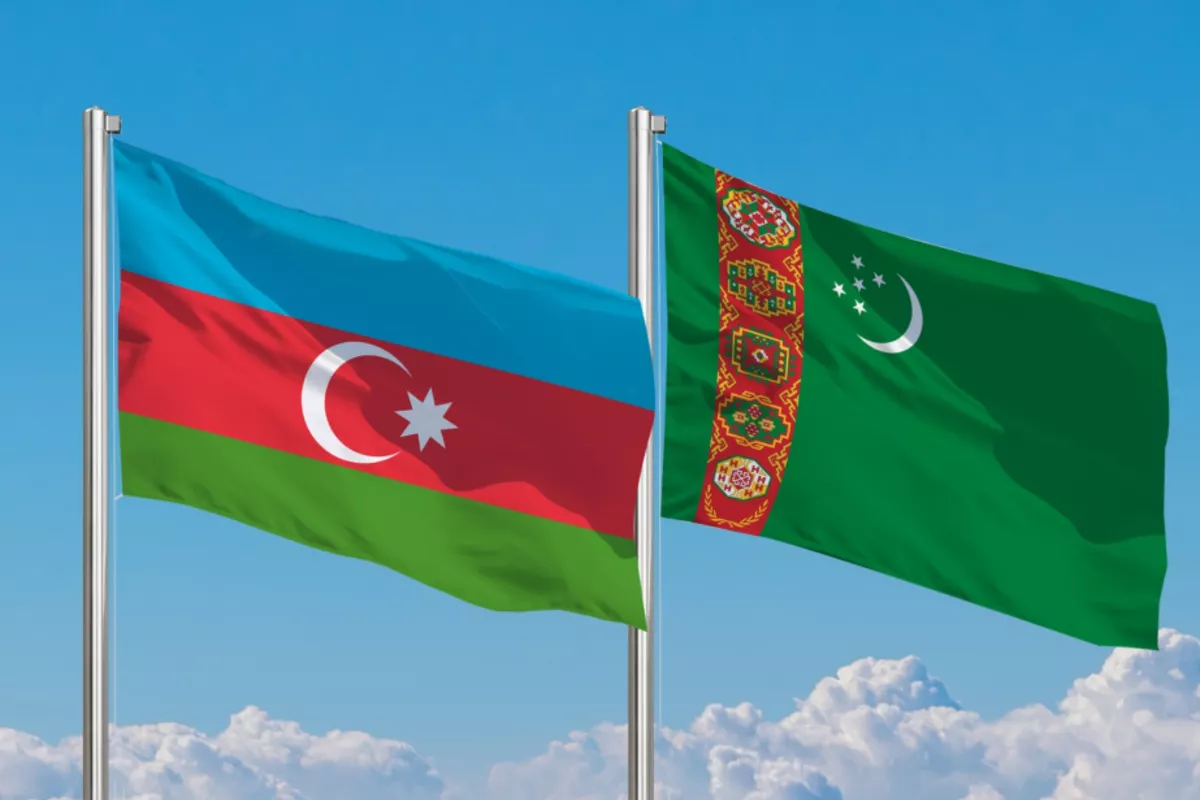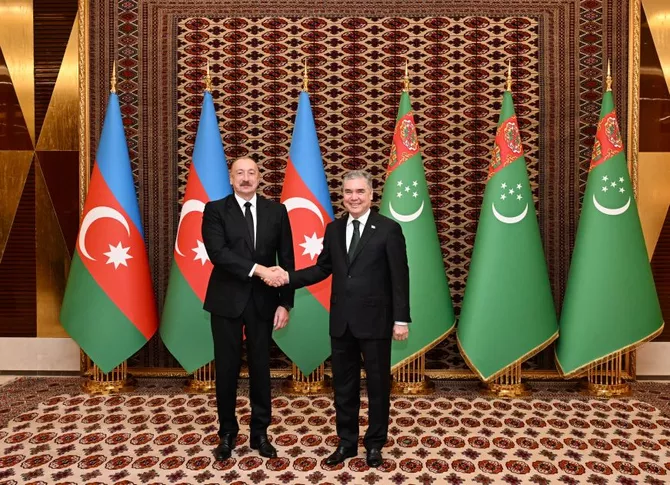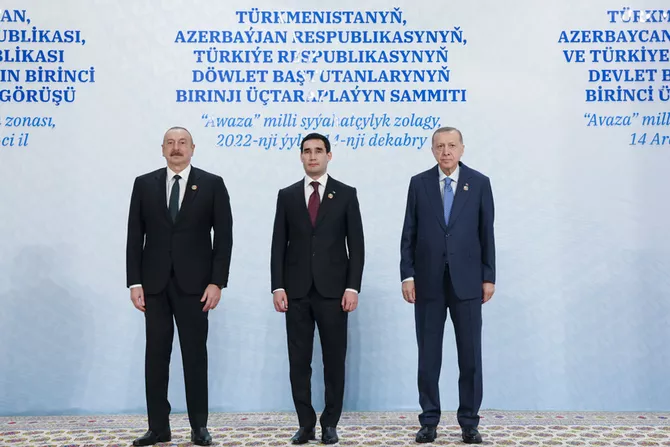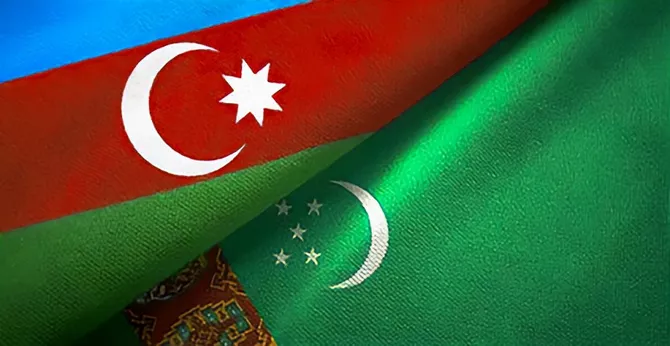
In recent years, Azerbaijan has been steadily expanding the geography of its foreign policy, consistently deepening ties with the countries of Central Asia. Against this backdrop, the growing dynamism of Azerbaijani-Turkmen relations stands out, as after a long period of relative passivity they are now reaching a qualitatively new level.
The visit of Chairman of the People’s Council of Turkmenistan Gurbanguly Berdimuhamedov to Baku in July, followed by the trip of President of Azerbaijan Ilham Aliyev to Ashgabat, gave the interaction fresh momentum and confirmed that both sides have the political will to transform their accumulated potential into tangible projects.

For many years, Turkmenistan remained on the periphery of Azerbaijan’s active diplomacy in the Caspian region, while relations with Turkey, Georgia, Kazakhstan, and Russia developed at a faster pace. However, the objective interests of Baku and Ashgabat have always overlapped - in energy, transport, education, agriculture, and humanitarian cooperation. Today, the window of opportunity has opened wider than ever, both because the regional geopolitical landscape has changed and because both countries have gained experience in successful participation in transregional initiatives - from the Southern Gas Corridor to the Trans-Caspian transport route.
Energy remains at the core of the agenda. The prospect of delivering Turkmen gas to the European market through Azerbaijani territory is not new, but today it has received renewed impetus. A turning point came with the January 2021 agreement on the joint development of the Dostlug field in the Caspian, with estimated reserves of about 100 billion cubic meters of gas and 60 million tons of oil. This agreement effectively removed longstanding uncertainties and brought the idea of the Trans-Caspian Gas Pipeline, under discussion since the late 1990s, back into practical focus. Since then, the region’s infrastructure map has changed significantly: TANAP and TAP have been built and fully utilized, Azerbaijan’s role as a reliable transit and supplier has been strengthened, and Europe’s demand for alternative energy sources has grown.
An additional political boost came from the trilateral summit of Azerbaijan, Turkmenistan, and Türkiye held in Avaza in December 2022. At that meeting, the leaders discussed in detail the routes for transporting gas from Dostlug to Western markets via the TANAP and TAP systems. Although technical, environmental, financial, and political issues have stood in the way, their weight has diminished against the backdrop of recent events: the regional environment has become more favorable for independent decisions by the Caspian states. Russia’s war in Ukraine has accelerated the reconfiguration of logistics and energy flows, weakening Moscow’s influence in the South Caucasus. Meanwhile, Iran, facing internal challenges and external pressure, has been forced to focus on preserving its own economic stability. As a result, the space for bilateral initiative between Baku and Ashgabat has expanded significantly.

Photo credit: newscentralasia.net
At this stage, engineering practicality and modularity of approach become especially important. The proposed 78-kilometer connecting section from Turkmenistan’s part of the Caspian shelf to Azerbaijan’s gas compressor facilities at the ACG and Shah Deniz clusters is not just an intermediate link but a key to scaling up supplies. Its implementation would “stitch” Turkmen resources into the already functioning Southern Gas Corridor, distributing investment risks and accelerating the timeline for reaching the market. Crucially, the project involves not only a physical pipeline but also the synchronization of standards, certification, long-term offtake contracts, and risk-insurance mechanisms - in other words, full integration into the existing infrastructural and regulatory ecosystem.
Beyond gas, the two countries also have much to offer each other and the world in electricity generation, including renewables. Azerbaijan is actively building a portfolio of renewable energy projects onshore and offshore, while Turkmenistan has declared its own interest in green energy and energy efficiency. This opens the door to joint ventures, equipment localization, and exchanges of expertise - from grid integration to energy storage. In the long term, such cooperation could complement gas exports with “green kilowatt-hours,” especially given Europe’s growing requirements regarding the carbon footprint of imports and the EU’s cross-border carbon regulation.
The transport and logistics dimension is no less important. For Baku and Ashgabat, aligning Caspian ferry lines, port infrastructure, customs procedures, and digital platforms is a way to turn their geography into a sustainable competitive advantage. The role of the Port of Alat and the Baku-Tbilisi-Kars railway is already growing, while capacity on the eastern shore of the Caspian is being strengthened. Joint investments in fleets, terminals, and multimodal hubs generate economies of scale, reducing the time and cost of shipping along the Trans-Caspian Corridor and making it more predictable for global cargo operators.

Equally noteworthy is the humanitarian and educational track. University exchanges, joint training programs for engineers and energy specialists, research consortia on the Caspian’s marine ecology, and museum and cultural collaborations all strengthen the “social fabric” of cooperation, build long-term horizontal ties, and increase the resilience of political agreements. Agriculture should also be mentioned: Turkmenistan and Azerbaijan face comparable climate challenges and can share best practices in water management, drip irrigation, seed production, and agro-logistics with high added value.
It is important to stress that Azerbaijan’s renewed focus on Turkmenistan does not mean a redistribution of priorities at the expense of other directions. Rather, it is a natural expansion of its “portfolio of ties,” in which each line reinforces the others. Cooperation with Ashgabat logically complements established formats with Türkiye and Georgia, expanding the energy and logistics potential of both the North-South and East-West corridors. For European partners, this provides additional guarantees of supply security and route diversification; for Asian partners, it offers a shorter and more predictable westward route.
President Ilham Aliyev’s visit to Turkmenistan demonstrated the readiness of both sides to move from general declarations to “project-based specifics.” Discussions on joint development of shelf deposits, energy exports - from gas to renewables - and the possible construction of the connecting pipeline and associated services reflect the maturity of the dialogue. In practice, this means launching working groups, preparing feasibility studies, and building financial models with the participation of international development institutions and industry investors.
Thus, Azerbaijani-Turkmen relations are indeed entering a new stage. Their distinctive features today are pragmatism, technological orientation, and a focus on tangible results measured not only in billions of cubic meters and tons but also in the resilience of supply chains, the depth of institutional cooperation, and the quality of human contacts. If the parties manage to consistently implement the declared initiatives, the energy and logistics map of Eurasia will become even more interconnected, and the role of the Caspian region even more significant. For Baku and Ashgabat, this is an opportunity to convert favorable circumstances into a long-term strategic advantage, and for partners in both East and West - to gain a reliable, predictable, and economically viable route of cooperation.
By Asif Aydinly
Share on social media